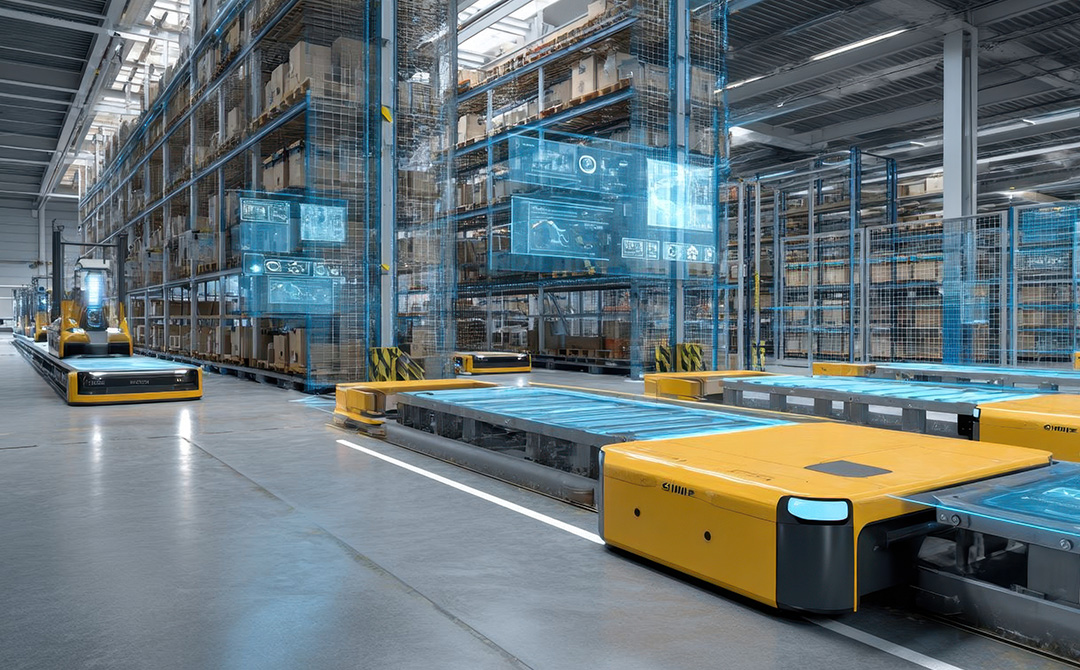
Are we entering the era of feature engineering with zero manual interventions?
Imagine spending painstaking hours crafting, selecting, and tuning features by yourself, losing precious time and risking technical errors in the process. That’s the biggest pain point automated feature engineering solves. You may ask yourself if we’ve really moved beyond manual feature engineering, but the real question remains: How exactly are automated solutions expected to reshape your workflows?
This is where we explore the exciting role of feature engineering automation and its potential in transforming the way you work as a data scientist. Whether you design experiments or validate models, automation is an indispensable part of your toolkit. Let’s dive in and find out what it truly means for your data science journey!
What Is Manual Feature Engineering
In a nutshell, feature engineering for machine learning is when raw data is transformed into impactful features that improve the performance of artificial intelligence and machine learning models. But when it's done on a more hands-on approach with human knowledge and intuition, that’s when it's called manual feature engineering. Think of it as a simple concept where data scientists leverage their domain expertise and understanding of data to create, select, and transform features like:
- Aggregations - Groups data points together and calculates summary statistics.
- Encodings - Converts categorical variables into numerics that models can better understand.
- Interaction terms - Combines two or more existing features.
While manual feature engineering offers greater control and interoperability, it’s still time-consuming and error-prone. But for high-stakes problems that need human input, it can be a valuable approach.
Why the Shift to Automation
According to a recent study, it was discovered that automated feature engineering showed significant performance gains, with methods like LLM-FE achieving median prediction improvements of 29-68% over baselines. (Source) This statistic alone can be a convincing enough reason as to why data scientists are slowly making the shift to automation. It’s no secret that automation can do a lot of things better than humans. And in this particular case, it saves time, improves model performance, and uncovers hidden patterns or problems that even manual methods often miss.
Additionally, it solves the problem of potential human biases and subjectivity with a more objective and data-driven approach. And finally, being able to handle multi-table data operations at scale is another reason powering the shift when efficiency is key.
What Is Automated Feature Engineering? Definitions & Core Concepts
When existing raw data is automatically converted into new features, that’s when automated feature engineering for machine learning enters. Back in the day, it was a manual, domain expert-dependent process. However, it can now accelerate ML model development with zero human intervention, marking a significant breakthrough for data scientists. It’s also made up of four key concepts:
- Feature extraction - Systematically generates a large number of candidate features from raw data. Mainly includes aggregations, transformations, and time-based features like day of the month or time differences between events.
- Feature transformation - Converts extracted features into suitable formats that ML algorithms can read well. It also handles numerical scaling and categorical variables like label encoding and one-hot encoding.
- Feature selection - Once a set of features is generated, it identifies and selects the most relevant and meaningful ones, discarding those that are irrelevant or redundant.
Core Techniques in Automated Feature Engineering
The main idea behind automation in feature engineering is that it reduces the manual efforts involved in preparing data for ML models. Through sophisticated algorithms and specialized tools, it generates, evaluates, and selects features from raw data with maximum autonomy. However, there’s more than one way to do it. Here are some of the core techniques in this concept:
Deep feature synthesis (DFS) - This robust technique can create complex features by combining information from multiple tables and relationships. The way it works is by automatically generating new features where it recursively applies a set of primitive operations - like mean, count, and max - across related entities in a dataset.
Dimensionality reduction - Also known as Principal Component Analysis, this technique reduces the feature space while preserving important information, keeping the model more simplified and reducing noise in the process.
Meta-learning & reinforcement learning - Advanced automated feature engineering systems use meta-learning to ascertain the best strategies that can be applied for different datasets. Reinforcement learning is also effective where agents are trained to explore feature spaces and discover suitable feature combinations.
Genetic algorithms & evolutionary computation - This technique is somewhat similar to reinforcement learning, where it searches for optimal feature sets or combinations. It also applies operations like mutation or crossovers to generate new features and uses fitness functions to evaluate their overall performance.
Leading Automated Feature Engineering Tools
As a data scientist, you’ll need to devote ample time and attention to manually addressing specific problems in a dataset. But not everyone has the time to sit and engineer features for generic problems, which is where the following tools act as your dedicated feature engineering assistants:
Featuretools
This is a popular open-source Python library that uses DFS to automate feature generation from relational and structural datasets. It can effectively create new features through aggregation and transformation operations.
TSFresh
Short for Time Series Feature Extraction based on Scalable Hypothesis Tests, this tool is specially designed for time series datasets. It extracts a wide range of features from the datasets and picks the statistically significant ones via hypothesis testing.
AutoFeat
Another open-source Python library for automated feature engineering, AutoFeat performs feature creation, selection, and transformation to improve the accuracy of linear models while maintaining interpretability. Its core capabilities lie in feature generation, selection, and scaling.
PyCaret
PyCaret is also an open-source, low-code library in Python that automates several aspects of the machine learning workflow. It delves into comprehensive automated feature engineering steps like handling missing values, detecting outliers, feature scaling, and encoding categorical variables.
While not directly a feature engineering platform, Tredence offers several data engineering services and domain-specific expertise that can help you accelerate feature generation like no other. We integrate end-to-end ML workflows into the process, helping you generate relevant and high-impact features for your business.
Benefits of Automated Feature Engineering
Aside from standalone benefits, the main purpose of automating feature engineering processes is to improve upon what’s being done manually. Here are some of its benefits in machine learning workflows:
Manual vs. Automated Feature Engineering: Side-by-Side Comparison of Cost, Accuracy & Resource Utilization
Rising data volumes and complexities challenge the traditional process of manual feature engineering. Automation, on the other hand, significantly adds more improvements to the process. But even technology has its limitations against human insights, which is an imbalance that data scientists must navigate. Here’s a side-by-side comparison of feature engineering automation and how it's different from manual engineering:
|
Basis |
Manual Feature Engineering |
Automated Feature Engineering |
|
Process |
Features are handcrafted by domain experts through manual coding, knowledge, and intuition. Also a time-consuming process that requires iterative trial and error. |
Uses algorithms and specialized tools to automatically generate features. It’s faster, scalable, and reproducible. |
|
Accuracy |
Can generate highly relevant and interpretable features tailored to a specific problem, often leading to high model performance if domain knowledge is strong. Human bias can get in the way. |
Can identify complex relationships missed manually, leading to better predictive performance. However, it may generate redundant or less interpretable features. |
|
Resource utilization |
Demands significant human expertise, attention, and time, making it resource-intensive in terms of skilled labor and iteration cycles. |
Demands significant computational resources and sometimes, higher CPU/GPU specs for large datasets. |
|
Cost |
Involves higher costs due to human labor, longer development cycles, and domain expertise. |
Incurs lower labor costs with faster execution, but higher computational costs. |
Industry Use Cases for Automated Feature Engineering
Feature engineering in data science has been successfully applied across multiple industries, with automation adding efficiency and flexibility to the mix. Top industry use cases
- Finance - Used primarily in fraud detection and credit-scoring, automation generates interaction terms and time-based aggregations from transactional data, enhancing accuracy and interpretability in predictions.
- Healthcare - Automation derives relevant temporal and demographic features from EHRs, improving the process of early disease detection and personalized treatment planning.
- Marketing - Automation greatly benefits customer segmentation and churn prediction models by generating behavioral and engagement features based on certain factors like purchase patterns, campaign history, and user interactions.
Integrating Automated Feature Engineering into MLOps
The combined power of automation in feature engineering and MLOps enhances the machine learning lifecycle, with the creation and management of features being an autonomous process. This integration is what helps improve model performance, efficiency, and overall reproducibility. However, several aspects go into this integration process, and as a data scientist, it could go a long way in helping you achieve a more robust and scalable MLOps pipeline:
Automated feature generation
- Integrates feature generation processes into the ML pipeline by utilizing libraries or custom scripts to automatically drive new features from raw data.
- Automating this process also ensures the pipeline is more consistent and scalable.
Feature store implementation
- Refers to a centralized repository that stores, manages, and serves features for both training and inference.
- The store also allows feature reuse across different projects/teams, with version control also enabling traceability and reproducibility of any changes made to features.
CI/CD for feature pipelines
- Continuous Integration/Continuous Delivery, a core DevOps practice, applies extensively even to feature pipelines.
- Not only are feature transformations and generation processes automated for model performance, but so is the deployment of updated feature pipelines to production environments.
Monitoring & feedback loops
- Integration into MLOps involves continuous monitoring for feature drifts and data quality issues.
- Alerts and triggers can be automated when data characteristics change.
- Iterative feedback loops also continuously improve automated feature engineering strategies based on the final performance of ML models.
Challenges & Pitfalls of Automation
Here are some of the common challenges and pitfalls that you are likely to encounter during automated feature engineering:
Computational costs
Automation, in general, demands significant computational costs, and it's no different when implementing it into ML feature engineering. It could get even more expensive if you’re dealing with exhaustive search or high-dimensional synthesis, in particular. In resource-constrained environments, automation costs are a major problem, further limiting scalability in real-time.
Data privacy issues
Whenever technology is involved in operational workflows, data privacy and security concerns are common. The same applies to automated feature engineering as well, since the process aggregates or transforms sensitive information to generate features. And there is the threat of reverse-engineered features that can expose personal data.
Bias and fairness
Automation can unintentionally encode or amplify biases present in training data. For example, features synthesized from discriminatory datasets can lead to biased outcomes, potentially constructed features that undermine fairness and affect marginalized groups of users.
Interpretability of engineered features
Sometimes, features created through mathematical compositions or deep compositions can be difficult to interpret. And in critical domains like finance or healthcare, it is a problem, as the reasoning behind predictions will have minimal clarity.
Best Practices for Effective Automation
Turning automated feature engineering into a more effective process consists of three simple steps: Strategic planning, robust tooling, and continuous validation. Given that it’s an iterative process, it’d take more than just the power of automation and the domain expertise of humans to churn out the right features. Let’s jump into a few recommended best practices you can follow as a data scientist to make the best of the entire process:
|
Practice |
Description |
|
Data cleaning automation |
Following this automatically handles missing values, outliers and duplicates present in raw data. |
|
Automated feature construction |
Automatically creates features through aggregation, interaction, and domain-specific transformations. |
|
Feature selection |
Helps reduce dimensionality by using sophisticated algorithms to pick relevant features. Techniques like recursive feature elimination or lasso regression drop redundant features. |
|
Bias detection tools |
Bias detection tools powered by automation can surface hidden biases or unfair feature correlations, ensuring corrective actions are enforced quickly. |
|
Rapid iteration & validation |
Through iteration, you can regenerate features rapidly with new data, facilitating quick model updates. Cross-validation can be done to verify the feature’s predictive power and drop those that degrade overall model performance. |
Future Trends in Feature Engineering Automation
As time progresses, data volumes will rise exponentially, and we could expect to see AI and ML systems become more sophisticated. This evolution means more to automated feature engineering than just efficiency in feature generation. Let’s look at some of the trends that could shape this data engineering segment and transform the way data scientists unlock insights.
Integration with LLMs
The merging of feature engineering automation and large-language models like BERT, GPT-4, and DALL-E presents exciting new avenues in how ML workflows are structured. For instance, LLMs can be useful for semantic feature extraction from unstructured data like texts or logs, and generate sample features. Future systems may use LLMs to interpret domain-specific context and recommend highly relevant feature transformations in human-readable formats.
Explainable feature automation
When automation is involved in feature engineering, data scientists face a unique challenge - striking that balance between performance and transparency. Because feature generation should not only be predictive, but it should be understandable as well, especially in domains where regulations or ethics come into play. Hence, automated feature engineering may embed explainability constraints during feature synthesis, tracing lineage paths, or translating complex features into natural language reasoning.
Human-in-the-loop approaches
Automation turning humans obsolete is a common misconception today, as it's not entirely the case. While it can do a lot of things better than humans can, it still lacks the human aspects of critical thinking and domain expertise that drive automation to do what it does.
That’s exactly what the Human-in-the-Loop principle achieves, fostering a collaborative system where automation handles feature generation, while humans validate and refine the outputs. Hybrid systems working under this approach will include interfaces where data scientists can infuse their knowledge, override automated decisions, or improve trust.
Final Thoughts
Manual feature engineering may have once defined the limits of speed and scale, but now, it's time to go autonomous. Automated feature engineering is gradually becoming the go-to strategy for data scientists looking to unlock value from raw datasets and build robust machine learning models. By eliminating the bottlenecks of trial-and-error in manual methods, automation is offering speed, accuracy, and reproducible results at scale, granted they come with good quality controls and domain-expert, human insights.
And if you’re looking to move past the manual grind and transition to intelligent automation, Tredence offers the expertise and tech stack you need for robust automated feature engineering with AI. By building automated ML pipelines, we ensure standardization and enhanced performance while also using AI agents to identify patterns or anomalies in datasets that you’ll use for feature creation. Partner with us today to know more!
FAQs
1] What is automated feature engineering, and how does it improve model development?
Simply put, automated feature engineering automatically creates, transforms, and selects relevant features from raw datasets to upscale the performance of ML models. It aids in improving model development by increasing efficiency, consistency, and predictive power.
2] Which types of feature engineering can be fully automated?
Data cleaning, feature extraction, aggregation, transformation, and feature selection are some of the feature engineering techniques that can be fully automated.
3] How can organizations prevent data leakage when automating features?
There are two ways to do this during automated feature engineering.
- Separating training, validation, and test sets before feature creation in a stricter and precise manner.
- Keeping watch and ensuring no target or future information leaks into features.
4] Can automated feature engineering integrate seamlessly with existing MLOps pipelines?
Yes, automated features integrate well with existing MLOps pipelines. This integration supports rapid feature creation and iteration within ML workflows

AUTHOR - FOLLOW
Editorial Team
Tredence
Next Topic
Enterprise AI Agents and Multi-Agentic Systems with Google Cloud: From Concept to Production
Next Topic




